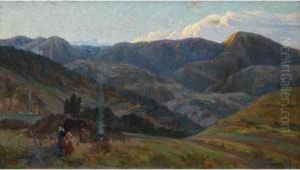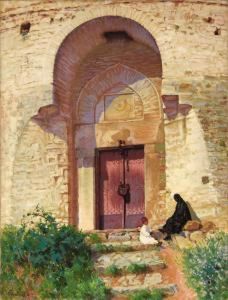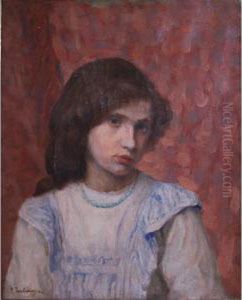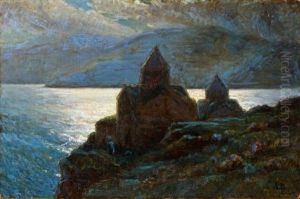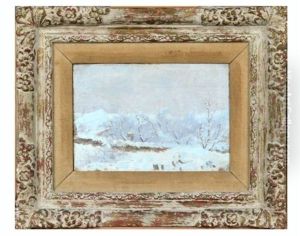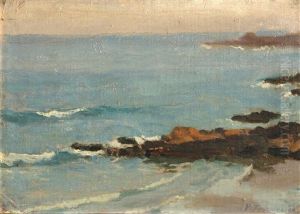Panos Terlemezian Paintings
Panos Terlemezian was an influential Armenian painter, renowned for his contributions to Armenian art during the late 19th and early 20th centuries. Born on March 3, 1865, in the city of Van, which was then part of the Ottoman Empire and is now in Turkey, Terlemezian grew up during a period of significant political and social upheaval.
From an early age, Terlemezian showed a passion for the arts. His talent was recognized, and he received a scholarship to study at the Lazarian Institute of Moscow. However, his education was interrupted due to his involvement in political activities against the oppressive Ottoman regime. Terlemezian was arrested and spent some time in prison. After his release, he managed to leave the Ottoman Empire to pursue his artistic education in Europe.
Terlemezian traveled to Paris in 1891, where he enrolled at the Académie Julian, a private art school popular among international artists. Under the guidance of teachers like William-Adolphe Bouguereau and Tony Robert-Fleury, he honed his skills in painting. Terlemezian was particularly influenced by the Impressionist movement, which is evident in his use of light and color.
He returned to the Caucasus region in the late 1890s and settled in Tiflis (now Tbilisi, Georgia), which was a cultural center for Armenians at the time. Terlemezian's work from this period reflects his deep connection to Armenian landscapes and rural life. His paintings are characterized by a vibrant palette and expressive brushwork, capturing the spirit of the Armenian people and their struggles.
Terlemezian continued to be active in the Armenian cultural scene, exhibiting his work in various locations, including Tiflis, Yerevan, and abroad. He also played a mentorship role for younger Armenian artists. During the Armenian Genocide, Terlemezian's work took on a new layer of significance, as he struggled with the anguish of his people's suffering.
Panos Terlemezian's legacy extends beyond his paintings. He was instrumental in establishing art schools and promoting arts education in Armenia. His dedication to the cultural life of the Armenian people made him a respected figure both in his homeland and the diaspora.
Terlemezian's life was marked by personal tragedies, including the loss of his family during the genocide. Despite these hardships, he continued to paint until his death on April 30, 1941, in Yerevan, Armenia. His art remains a testament to the rich cultural heritage of Armenia and the resilience of its people. Panos Terlemezian is remembered as one of the pillars of Armenian national art and an important figure in the development of modern Armenian painting.
